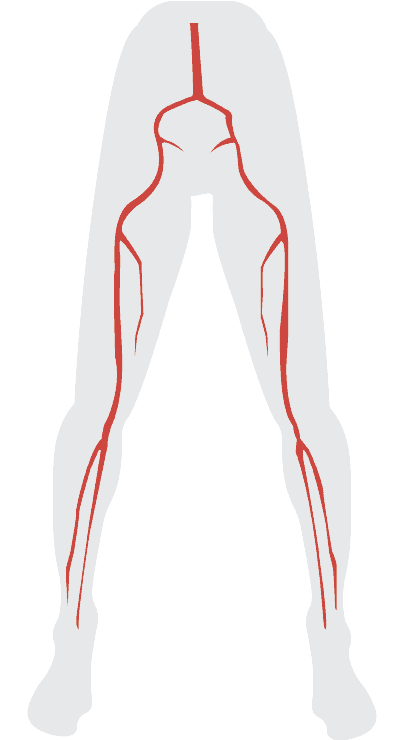Are you at risk for Peripheral Artery Disease (PAD)?

What is Peripheral Artery Disease (PAD)?
As we age, we may face unexpected health challenges. Aging can weaken blood vessels, causing circulatory issues that can lead to serious complications if left unmanaged. Peripheral Vascular Disease is a common disorder that can lead to life-threatening situations. Unless the underlying disease is managed, those with Peripheral Vascular Disease could face amputation of the affected leg or be at risk of heart attack or stroke.
Who's most at risk for PAD?
- Smokers
- People with high blood pressure or high cholesterol
- Patients with Lupus, arthritis, or other inflammatory diseases
- People who have diabetes
What are the symptoms of Peripheral Artery Disease (PAD)?
The symptoms and severity of Peripheral Vascular Disease vary from person to person. The most common symptoms include pain, aches, and cramps in the legs while walking, called claudication. Cramps can occur in the buttock, calf, hip, or thigh, and usually go away with rest.
When PVD is left untreated and allowed to worsen, pain lingers for longer and can be triggered while laying down.
Other PAD symptoms include:
- Leg pain or tiredness with exertion that is relieved with rest
- Toes or feet that become discolored when upright
- Skin that is cool to the touch or feels thin on the limbs
- Hair loss on the arms and legs
- Slow healing wounds on the limbs
- Muscular atrophy of the limbs
- Burning feet diagnosed as neuropathy
- Paleness, reddened or bluish skin on the legs or arms

Hover to see the signs of PAD
Minimally invasive treatment options for Peripheral Artery Disease (PAD)
Peripheral Vascular Disease affects one in 20 Americans over the age of 50.
The advancements of medical technology in the last 10 years has allowed advanced physicians to safely and effectively enter the small arteries in the ankle and foot, which were once considered impossible to treat.
Mastering these advanced techniques has prevented the loss of a foot or limb on countless patients over the years.
Following diagnosis, our vascular specialists can guide you through your treatment options depending on your specific case. For some, the solution may lie in simple lifestyle changes that require consistency. Others may require medication or minimally invasive surgery.
Angiograms – minimally invasive diagnostic procedure used to confirm the presence of disease.
Angioplasty – the expansion of a small balloon in the artery at the area of the blockage to re-establishe blood flow through the artery, after which the balloon is removed.
Stent Placement – We place a small metal mesh tube that may accompany balloon angioplasty that help the vessel remain open.
Atherectomy – The removal of plaque (cholesterol, fat, and calcium deposits) in order to return the elasticity of the blood vessel.
Catching Peripheral Artery Disease (PAD) early is important
PAD Patients are at more than 6 times the risk of death from coronary heart disease as those without PAD. If you’re experiencing symptoms, see a doctor.
During your initial visit we will:
- Learn about your medical history and symptoms
- Perform a comprehensive vascular physical
- Perform an ultrasound to see vasculature (if necessary)
- Discuss treatment options and next steps
Important PAD & CLI Facts
Eight million Americans suffer from PAD.
160,000+ amputations occur every year in in U.S. as a result of untreated PAD.
54% of those amputation patients never even received a diagnostic angiogram.
Angiograms reduce the odds of amputation by 90%
